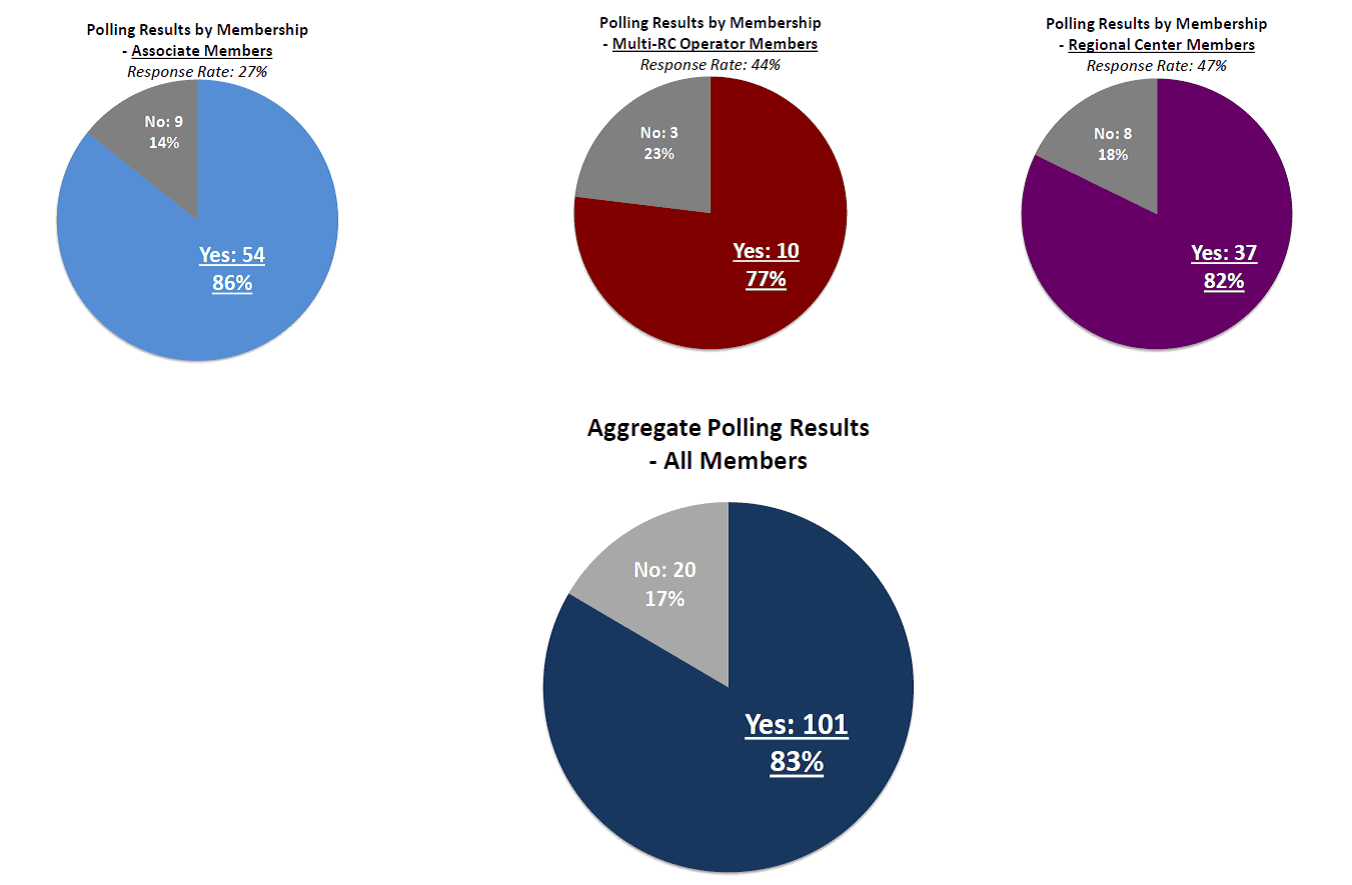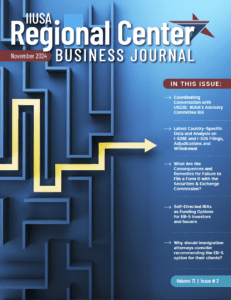IIUSA Develops Four Point Compromise Plan for EB-5 Reauthorization
Industry trade group delivers compromise proposal to help policymakers conclude their ongoing negotiations
(PRWEB) NOVEMBER 11, 2015
With the EB-5 Regional Center Program set to expire on December 11, IIUSA, the national not-for-profit trade association representing over 290 EB-5 Regional Centers that account for over 95% of capital flowing through the Program, has developed a compromise proposal for reform measures that may be included in long-term reauthorization legislation. The recommendations were delivered in a letter to the bipartisan leadership of House and Senate Committees currently negotiating reauthorization bill language.
“After careful consideration and a very deliberative process involving our leadership, relevant committees and the broad-base of IIUSA members, we have crafted a set of compromise proposals to help policymakers conclude their ongoing negotiations and keep EB-5 working for America,” commented IIUSA Executive Director Peter Joseph. “Our goal was to develop workable solutions that address the concerns and interests of policymakers and the EB-5 industry. With more than $9 billion of EB-5 capital in the pipeline, it is critical that the program be reauthorized before December 11 with no lapse. “
Under EB-5, a program created by Congress with broad bipartisan support, foreign nationals who invest at least $500,000 or $1,000,000 in approved U.S. businesses are eligible for permanent residency if the U.S. government confirms that their investment created or sustained at least 10 American jobs within two years of the investment.
Since 2008, EB-5 has generated $13 billion in foreign direct investment. From 2010-2013, the Program contributed $9.62 billion to gross domestic product while supporting an average of 29,300 jobs per year. More than 40,000 jobs were supported through EB-5 in 2012 and 2013 alone. Over 95 percent of all EB-5 investments flow through EB-5 Regional Centers.
The four recommendations included in the compromise proposal are:
- Targeted Employment Areas (TEAs): High unemployment TEAs must be a geographic area or political subdivision consisting of no more than 12 contiguous census tracts or smaller subdivisions. Zero population subdivisions may not be used to establish contiguous connection between census tracts not otherwise connected. This proposal is modeled on the state of California’s current approach and strikes a balance between restrictive and expansive approaches included in the five reauthorization bills that have been introduced this Congress.
- Minimum investment amount: New minimum investment of $800,000 in TEAs and $1,000,000 in non-TEAs. Narrowing the difference between TEA and non-TEA investments should make it more feasible for projects in either category to raise capital, while the middle ground on TEAs above would provide sufficient opportunity for urban areas to qualify as TEAs. To be successful, the EB-5 program must be competitive with global immigrant investor programs in price and risk. A balanced two-tier system would help keep the Program competitive globally while giving both urban and rural areas the ability to compete for EB-5 investments.
- Job creation methodologies: No geographic limitation on indirect job creation, limit on non-EB-5 capital contributions to project economic impact, or other changes to how job creation is currently measured. The ability to count indirect jobs in a manner consistent with regional economic development goals and the purpose of the EB-5 Regional Center Program is vitally important to maintain the utility of the Program. Maintaining the current policy on job creation will ensure that the true economic impact of the EB-5 Program is taken into account for investors seeking to qualify for their immigration benefits.
- Effective dates: Program reforms do not apply to any investors who filed an I-526 petition before the date of enactment (i.e., only apply prospectively to investors). With well over 13,000 I-526 petitions currently pending adjudication at USCIS, ensuring that all I-526 petitions are adjudicated using the rules under which they were filed is imperative to maintain investor confidence.
“EB-5 is a complex program with billions of dollars in important job-creating investments at stake. It is essential that EB-5 industry leaders have an opportunity to review any proposed legislation to provide constructive feedback on ways to improve the program without inadvertently undermining the Program’s economic development potential,” noted Joseph. “We are currently reviewing the latest draft bill which was released before we submitted our recommendations and look forward to continued discussions with policymakers.”
IIUSA’s compromise provisions were developed after careful and full consideration of the policy discussions to date, EB-5 and global industry data, and review of the various legislative proposals on EB-5 from current and past Congresses. Recommended and supported by the IIUSA Board of Directors, the proposal received unanimous support from IIUSA’s Public Policy Committee and from a significant majority of IIUSA’s membership in a poll taken from October 28-29.
The results of the poll show strong support for the proposal by each membership category and in total. To view the voting breakdown, click here.








